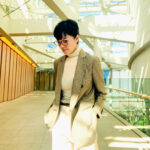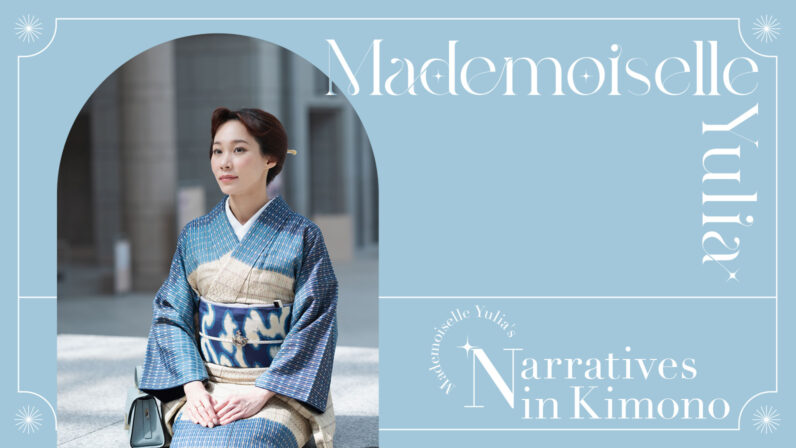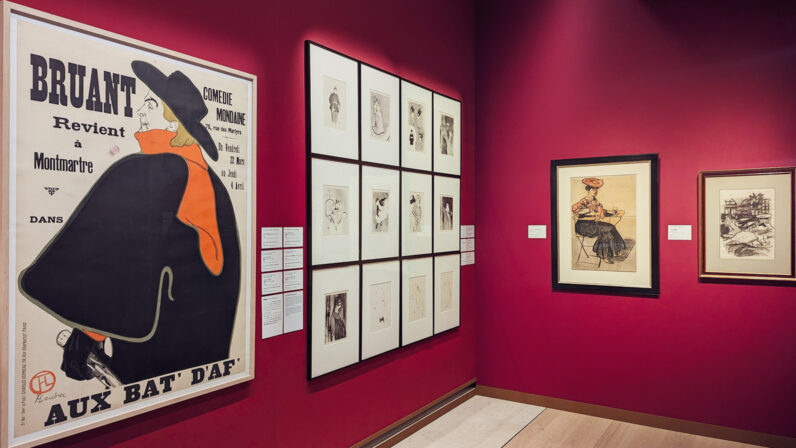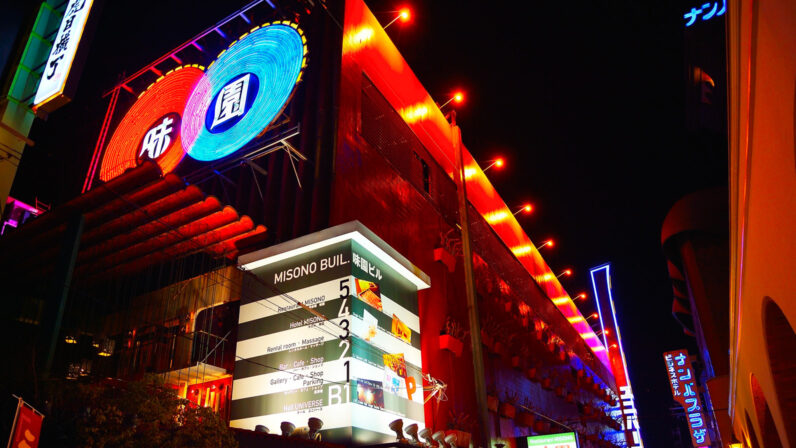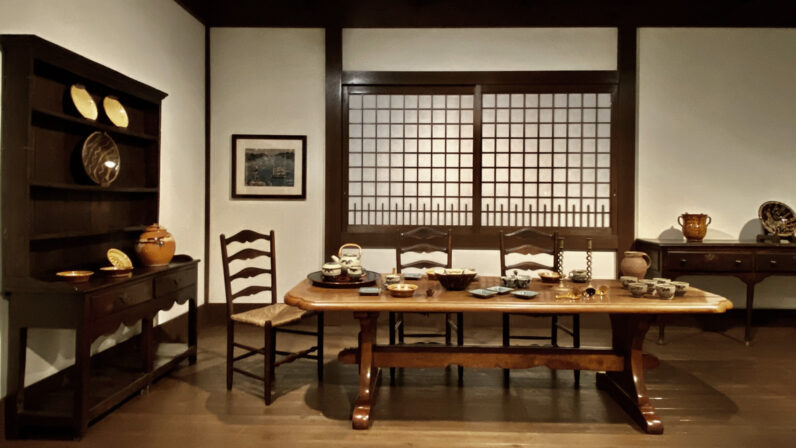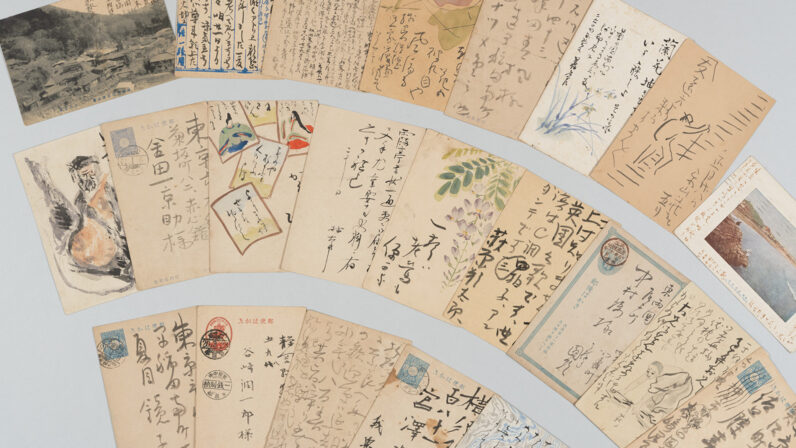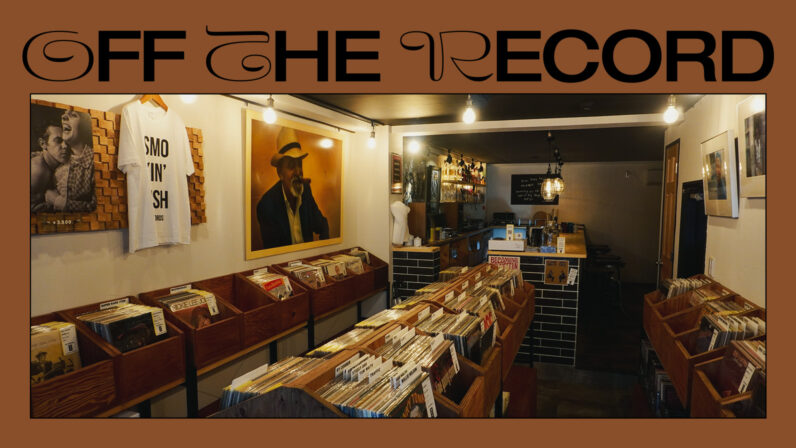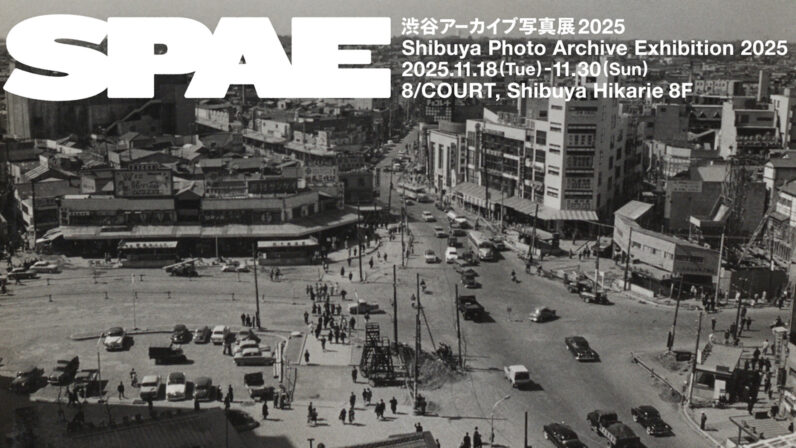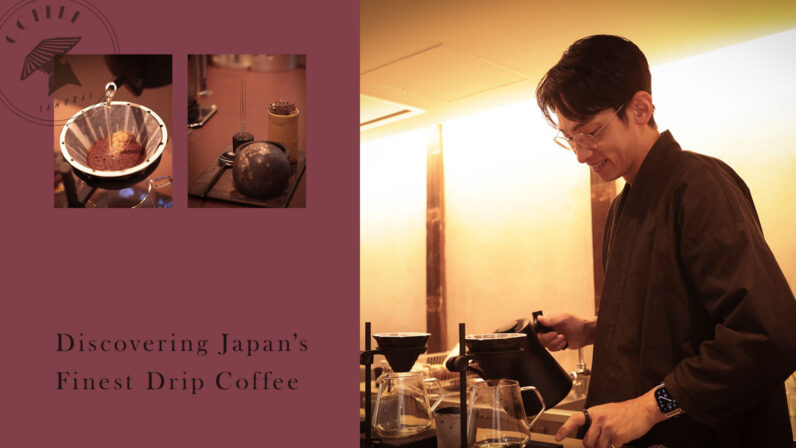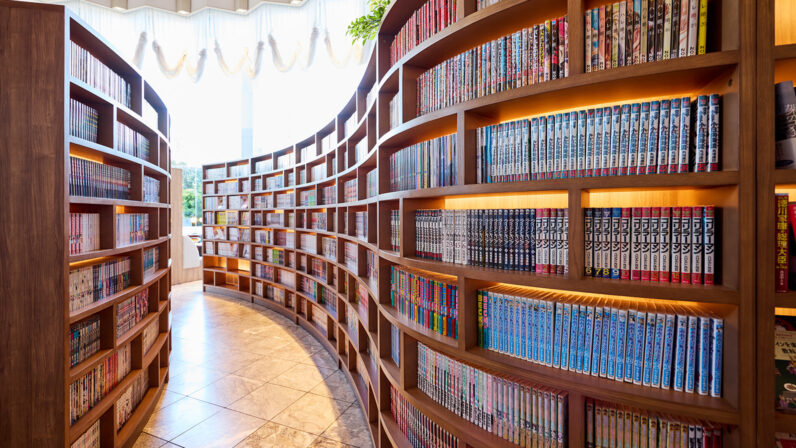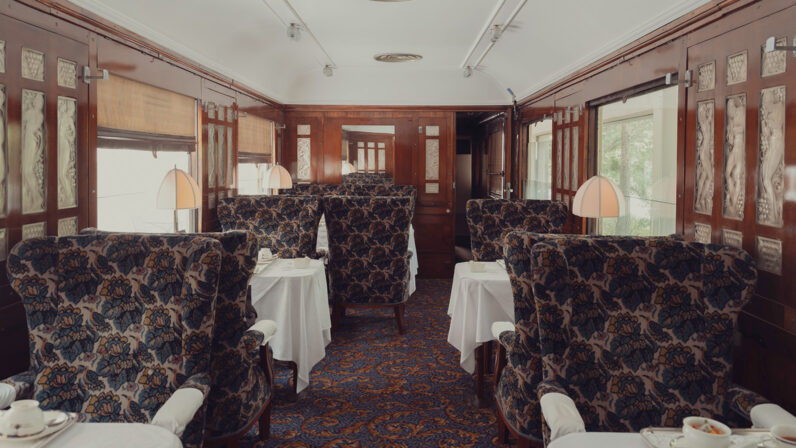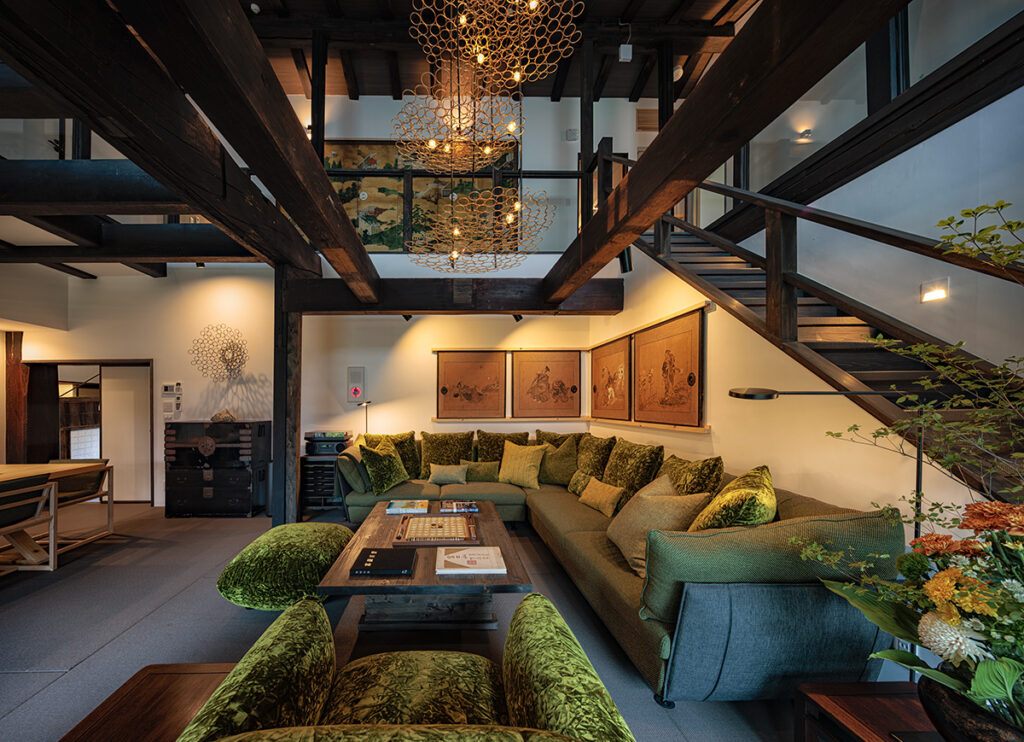
Gakuroku Suien, which opened last year in the Lake Kawaguchi area.
Discovering an accommodation that leaves you wanting to return adds an unforgettable, emotional element to your travel experience. Embodying this feeling is the ‘Curation Hotel’—a collection of distinct spaces where timeless Japanese architecture that spans across generations meets carefully curated international art.
Just a short trip from the city, in the resort town of Atami, you’ll find three properties that are completely private, whole-house rentals: ‘Tounoya-an,’ ‘Momoyama-gaen,’ and ‘Suto-suien.’ Last year, a fourth, ‘Gakuroku Suien,’ opened by Lake Kawaguchi. This unique project, which weaves the concept of ‘curation’ into the guest experience, was brought to life by world-renowned interior designer Noriko Sawayama, who spent 17 years honing her craft in London.
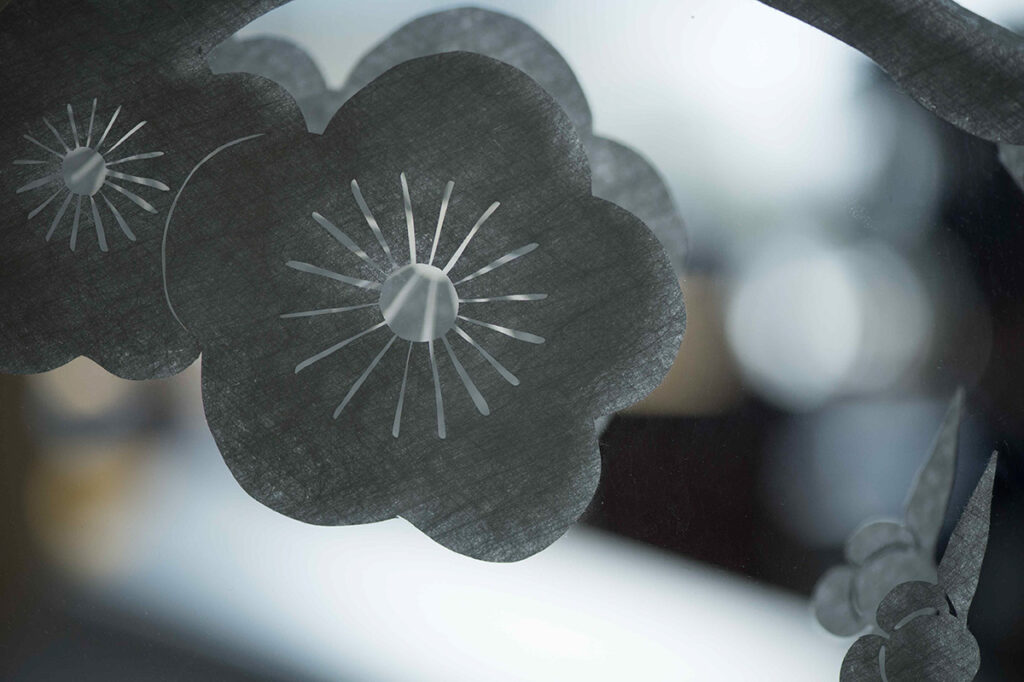
Hina Kumagai’s washi art, inspired by Atami’s reputation as ‘Ume no Sato’ (Plum Village), adorns the glass walls and sliding doors of Momoyama-gaen
The main goal of the Curation Hotel, envisioned by Sawayama, is to revive Japan’s traditional architecture, which has been gradually fading away. The first villa hotel, Tounoya-an, opened in 2018 and is centered around an 85-year-old sukiya-style building that once served as an inn. Rescued from the brink of demolition, it was not only restored but transformed to enhance the beauty of wabi-sabi, which embodies the craftsmanship from a passage of time that can no longer be replicated. Art pieces, furniture, and lighting have been thoughtfully arranged to create a space for rediscovering the essence of Japanese culture that celebrates functionality.
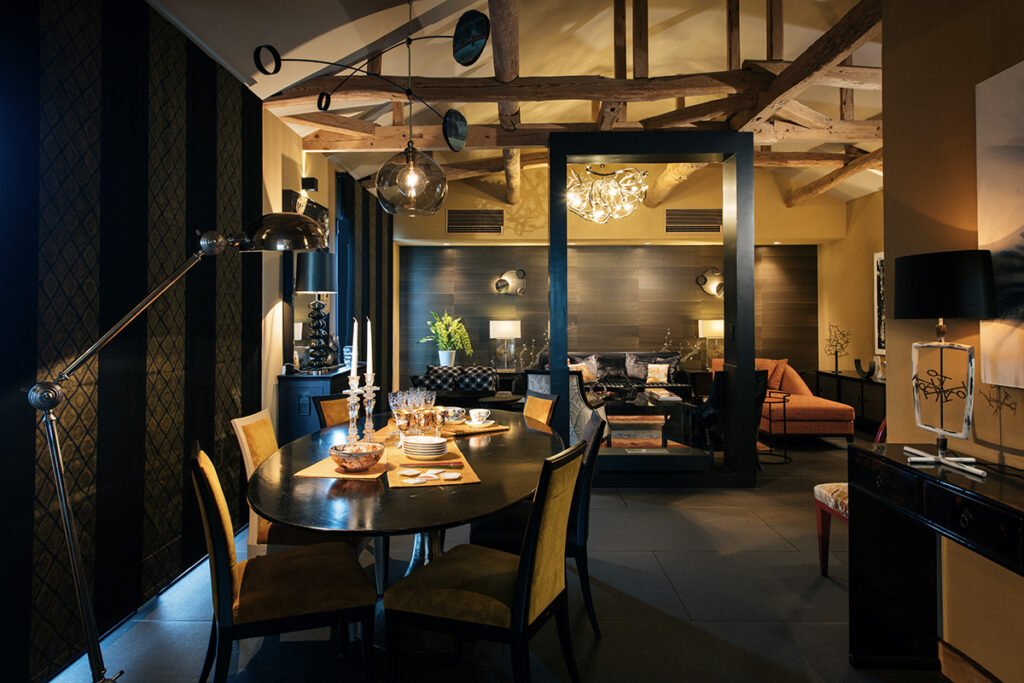
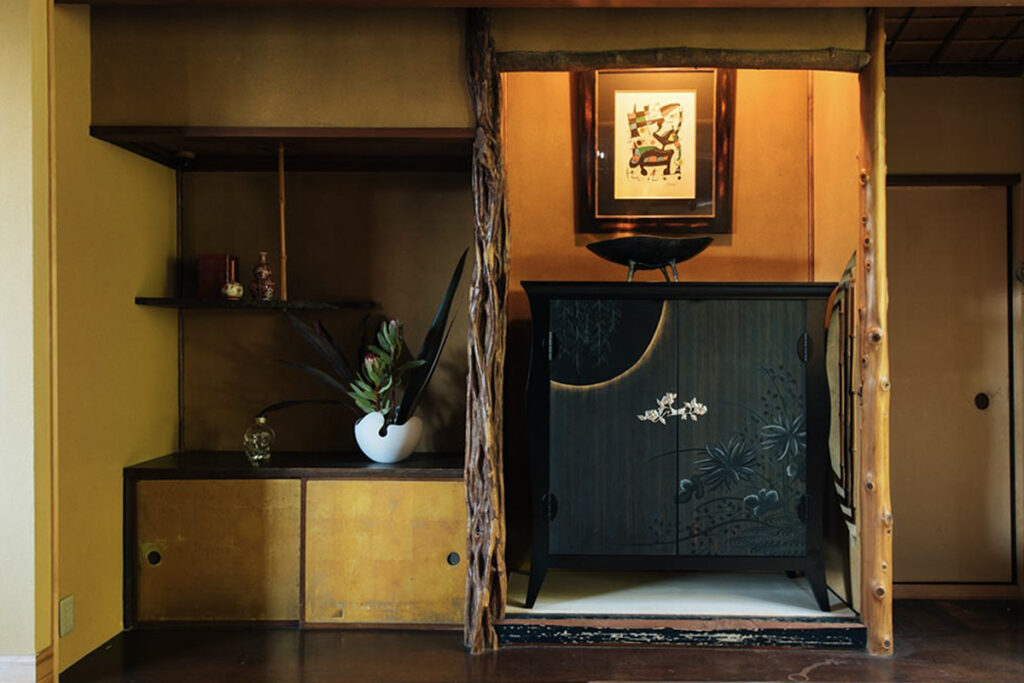
1st Image: The impressive ceiling beams, revealed through traditional washing techniques, and the central black entrance designed as a fireplace both infuse the space with vibrant energy.
2nd Image: The floor columns and shoin shelves maintain their original charm, while the cabinet and art pieces are reminiscent of exquisite crafts and express a modern aesthetic (Tounoya-an).
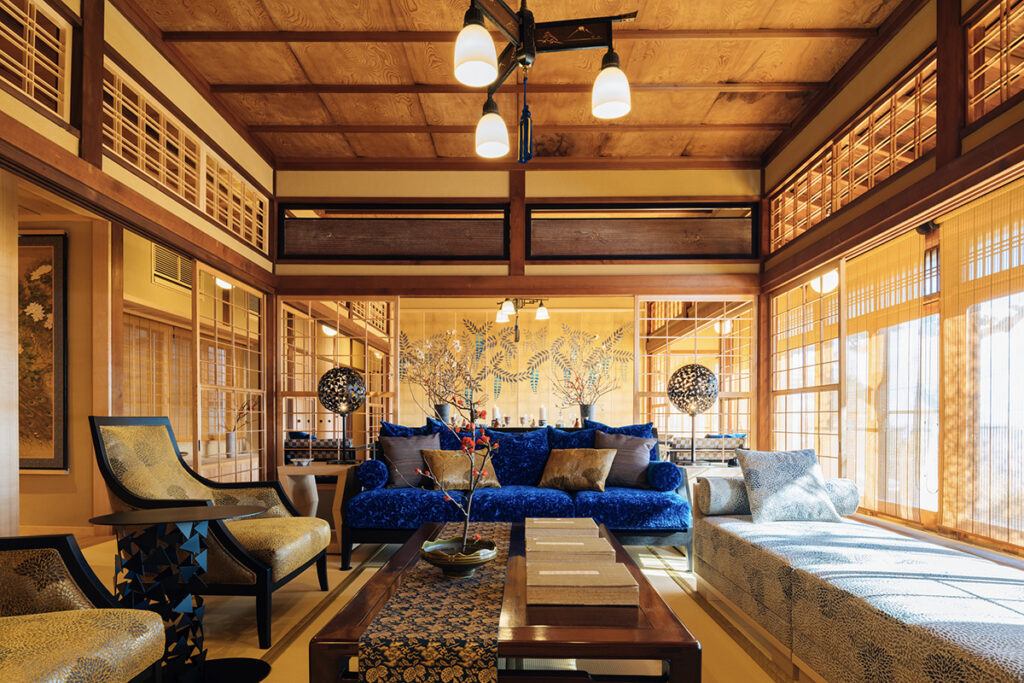
Elegant beauty is interwoven all throughout this tangible cultural asset, which is over 100 years old (Suto-suien).
One of the unique draws of the Curation Hotel is the chance to admire valuable art pieces collected by the discerning owners of each building. Among these treasures are paintings and furnishings that represent Japan’s cultural heritage, many of which were lost overseas during the late Edo period. For instance, in the stunning lounge of Momoyama-gaen, which features a ceiling height of 3.9 meters and spans a spacious 100 square meters, a folding screen painting of Mount Fuji from the 1800s by the Rinpa school graces the walls. The bold composition and vibrant lapis lazuli blue, also exhibited at the Warsaw National Museum, seem to infuse the space with the sacred aura of Mount Fuji. Spending private moments surrounded by such masterpieces is sure to create remarkable impressions and lasting memories.
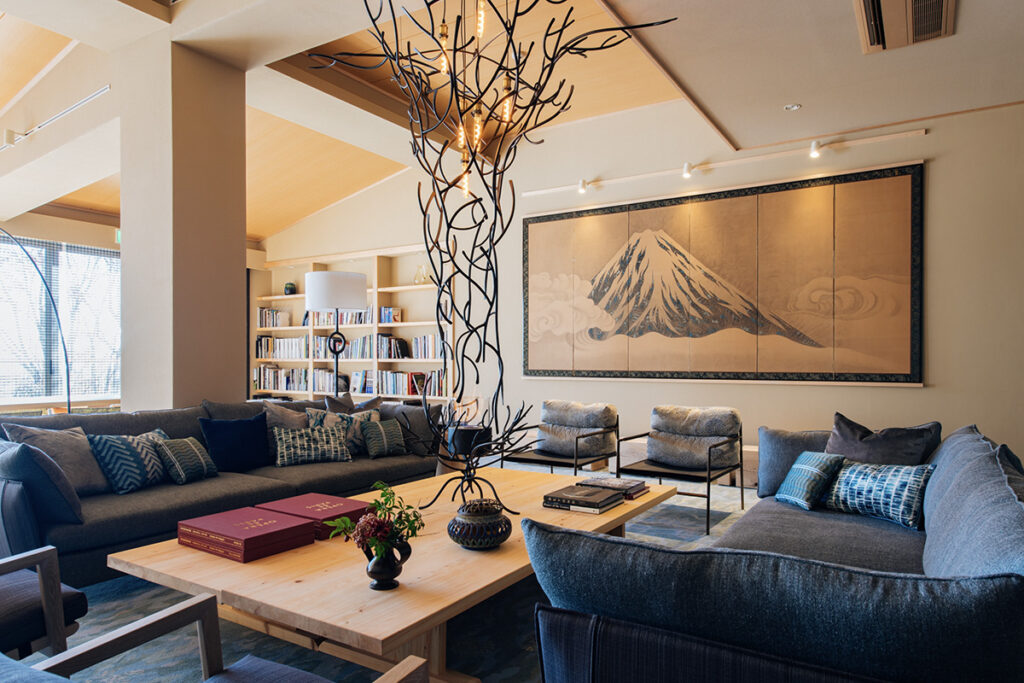
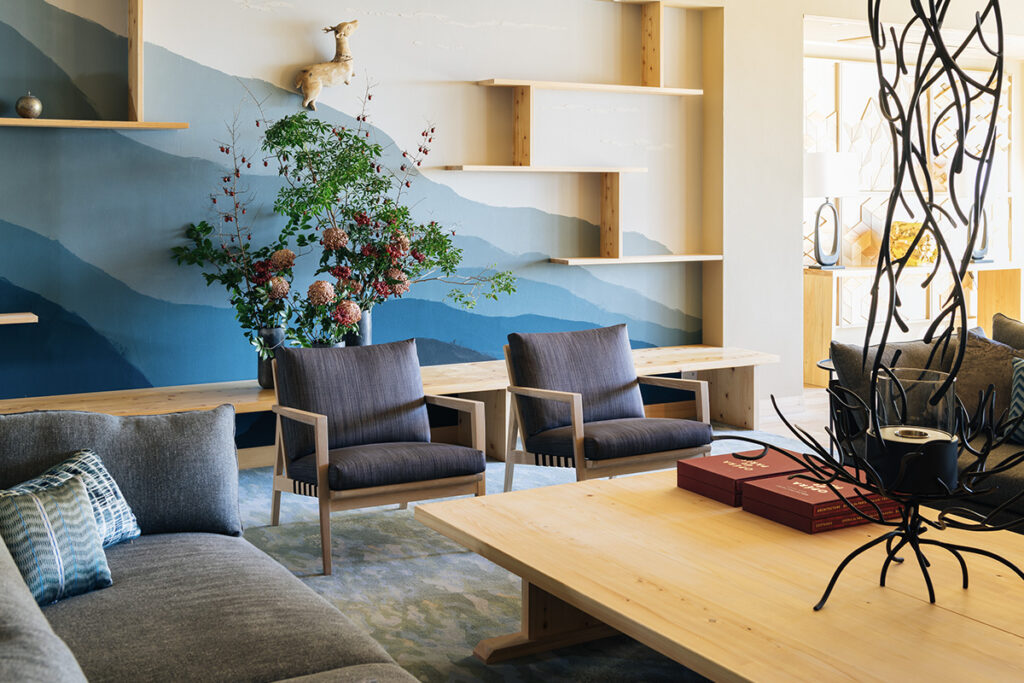
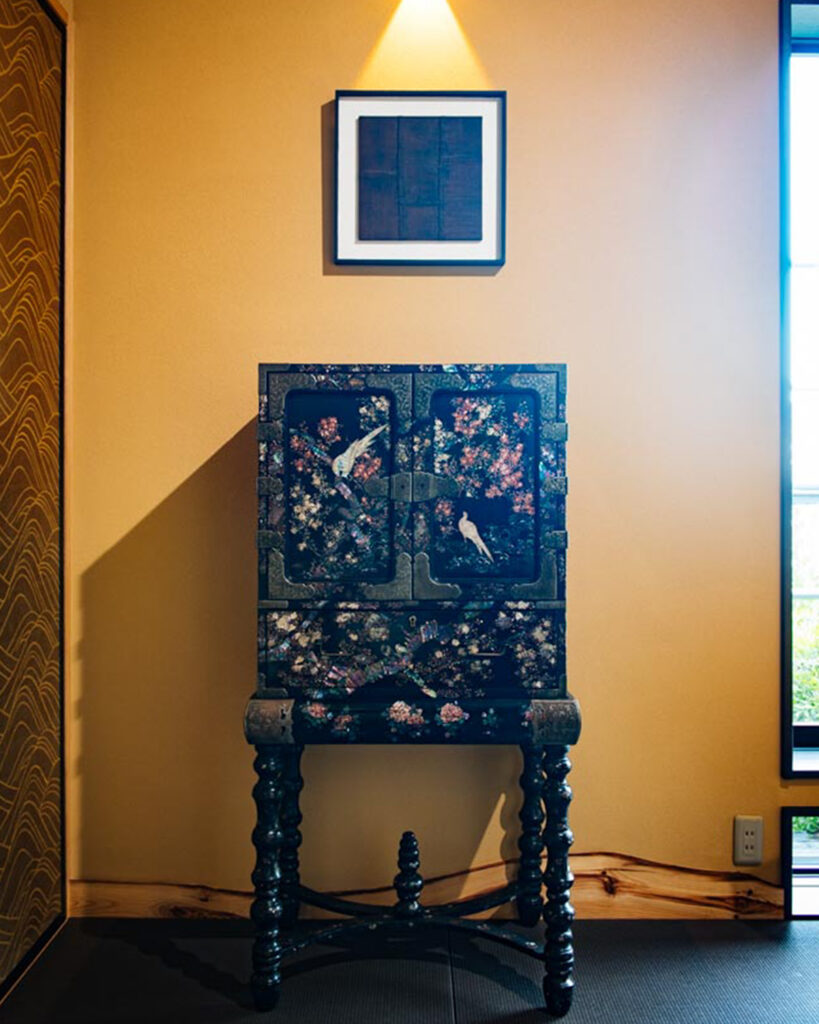
1st Image: The folding screen painting of Mount Fuji is striking even from a distance (Momoyama-gaen).
2nd Image: The wooden deer carving dates back to the early Heian period, over 1,000 years ago. The outline of Momoyama is depicted through plaster art, evoking the image of running through the mountains (Momoyama-gaen).
3rd Image: A cabinet featuring Nagasaki mother-of-pearl inlay, also lost during the late Edo period (Tounoya-an).
Additionally, the Curation Hotel serves as a cultural exchange space where people can gather and learn, with a focus on reimagining its historical character in a contemporary way. Each building features a spacious living area designed as the focal point, complete with designated spaces for projectors. At Momoyama-gaen, a bold renovation transformed a 600-square-meter building from the 1970s, which was previously a resort, into an impressive venue. It includes a large dining table with an adjoining library, as well as a study equipped with a large monitor. Guests can also enjoy the option of experiencing Noh theater.
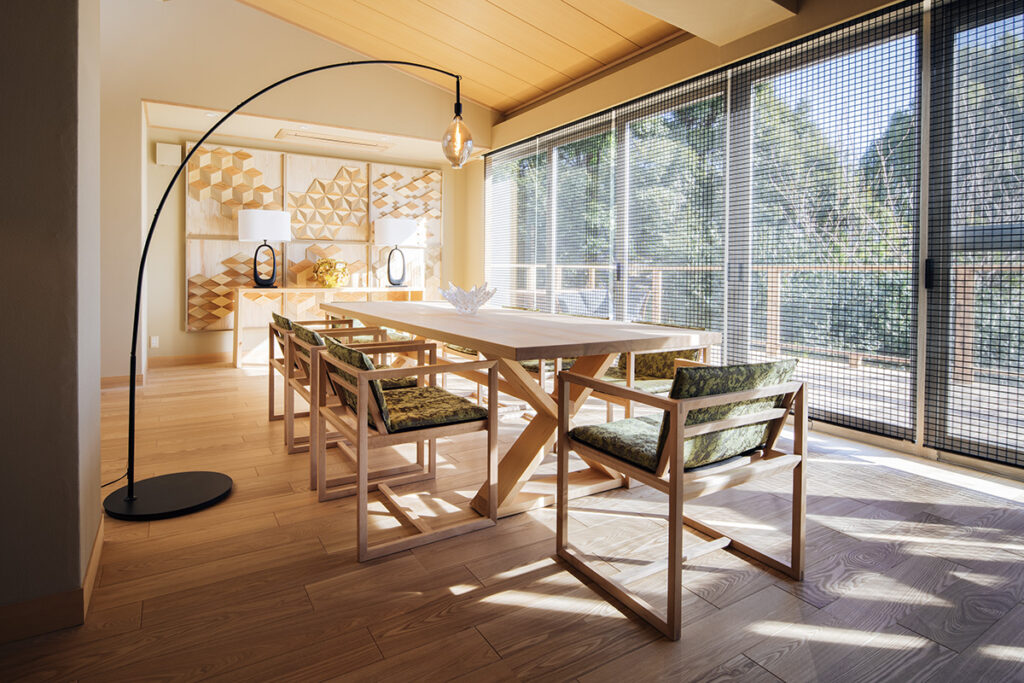
The dining table, designed to seat ten, features an original design inspired by the Ise Shrine (Momoyama-gaen).
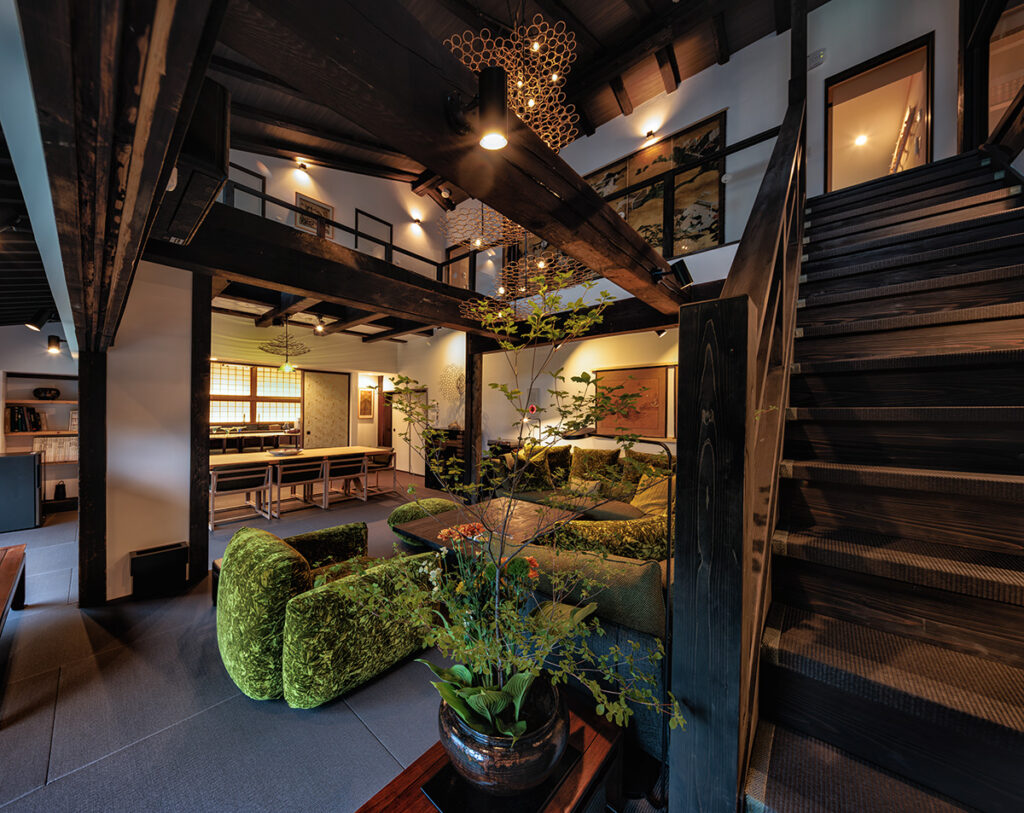
The open living salon features a vibrant mix of colors and incorporates a variety of materials (Gakuroku Suien).
At Gakuroku Suien, a registered tangible cultural asset over 200 years old, the dynamic living and dining areas seamlessly connect to create a single space that extends up to the second floor. The walls feature screens depicting The Tale of Genji, ukiyo-e prints from the Fuji pilgrimage, and elegant fusuma paintings representing the four seasons. Lighting art created by sculptors hangs from the ceiling, adding a vibrancy to the atmosphere.
Beyond the inherent value of blending various traditions and innovations, this venue holds the potential to make a significant impact on the tourism industry. It is a villa that leads the way in arts and crafts tourism, inviting guests to experience a one-of-a-kind stay that deepens their appreciation of Japan’s aesthetic sensibilities.
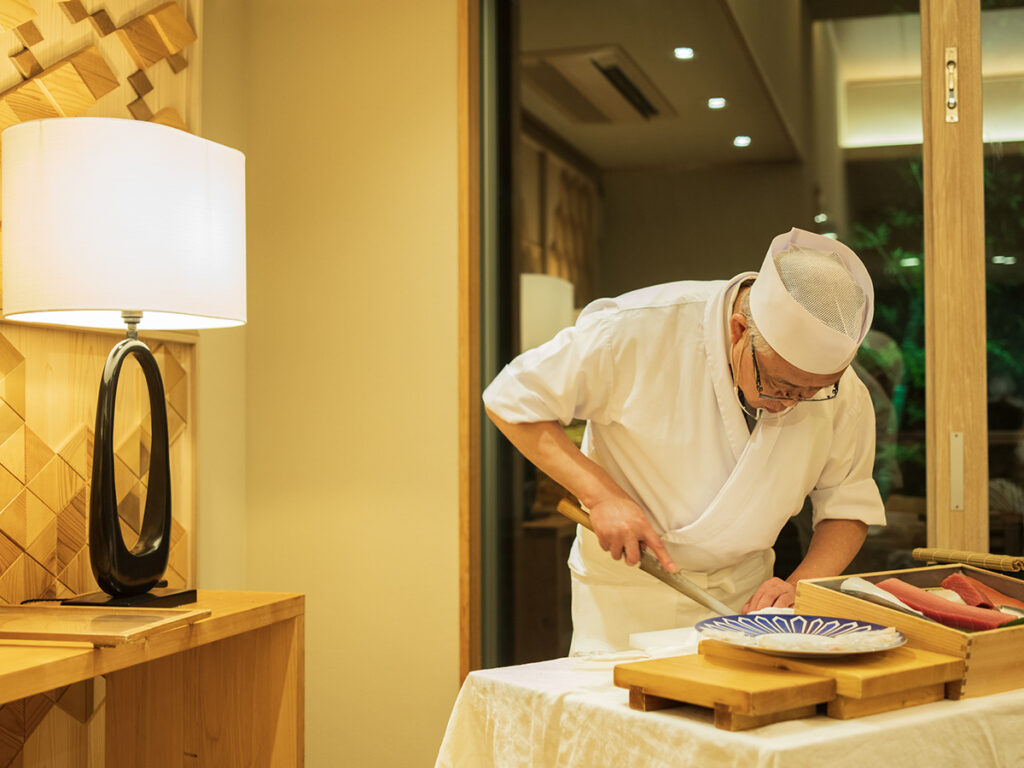
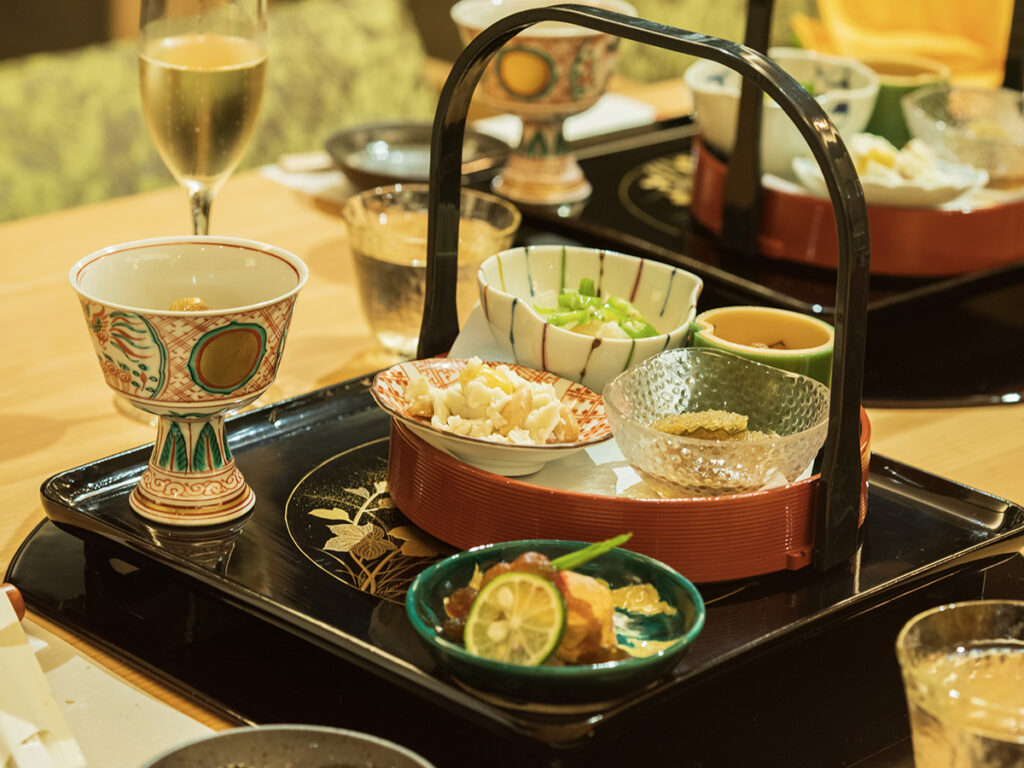
During your stay, you’re welcome to use the kitchen freely, and you can also enjoy watching the art of sushi-making or order from a private chef.
◾️Tounoya-an (Atami)
Japan’s first Curation Hotel. This unique destination beautifully combines a 1933 sukiya-style building, once an inn, with exotic elements brought to life through carefully selected furniture and art. The kitchen island counter, featuring Echizen washi embedded in acrylic, is a sight to behold. It accommodates up to 6 guests in 3 rooms.
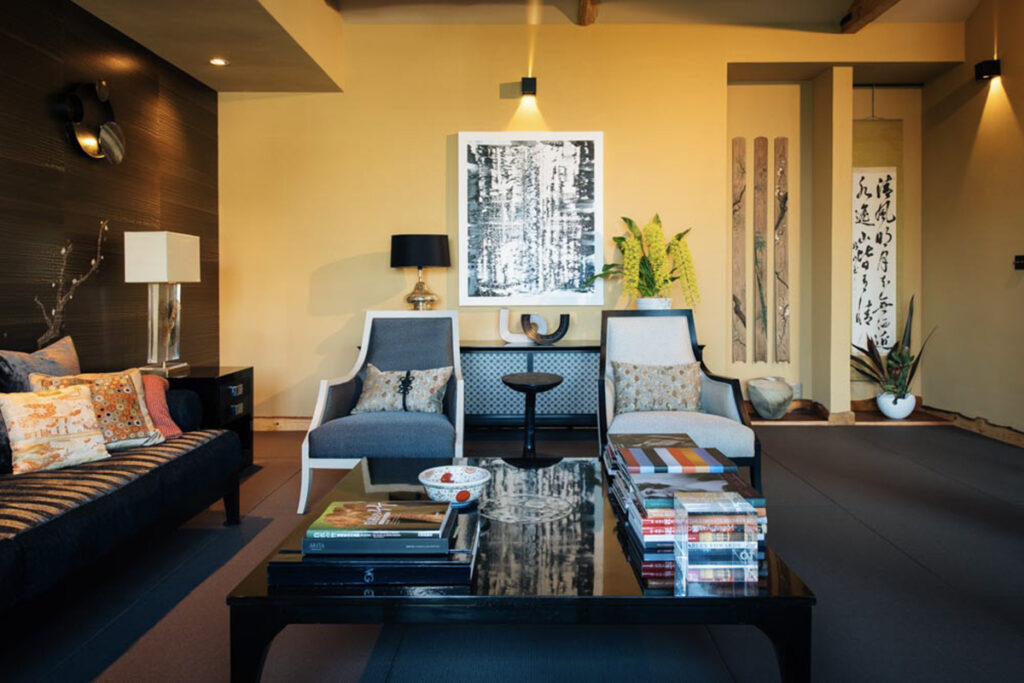
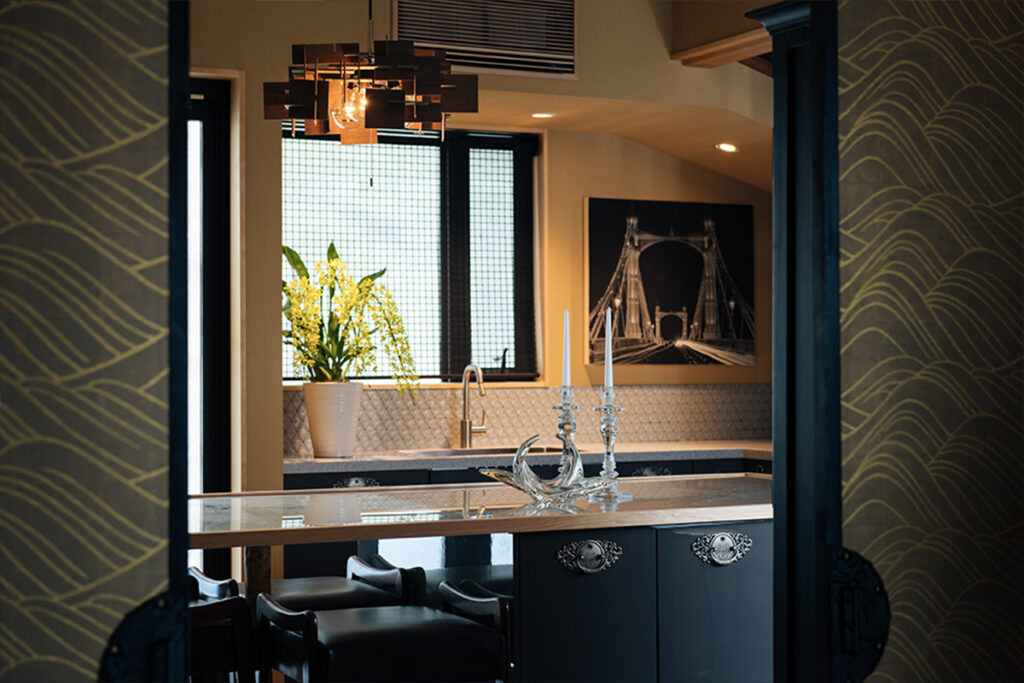
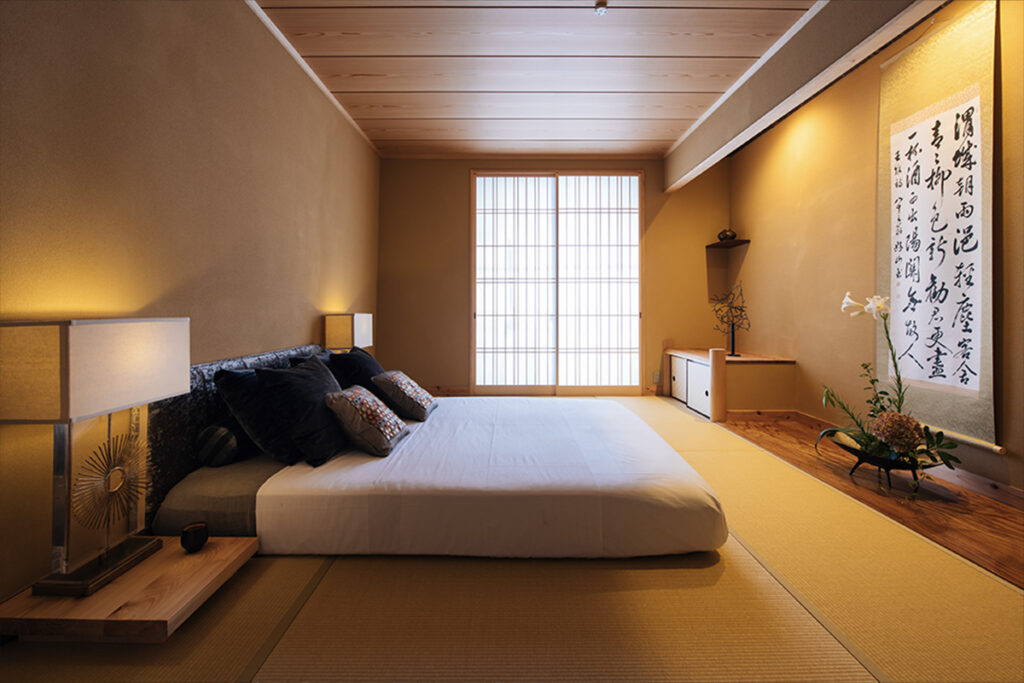
◾️Momoyama-gaen (Atami)
Originally built in 1976 as a resort, this concrete building has been renovated with themes inspired by Atami’s sea, mountains, and traditional performing arts. Guests can enjoy a vibrant collection of contemporary art from young artists, curated by the philanthropic owner. It accommodates up to 8 guests in 4 rooms.
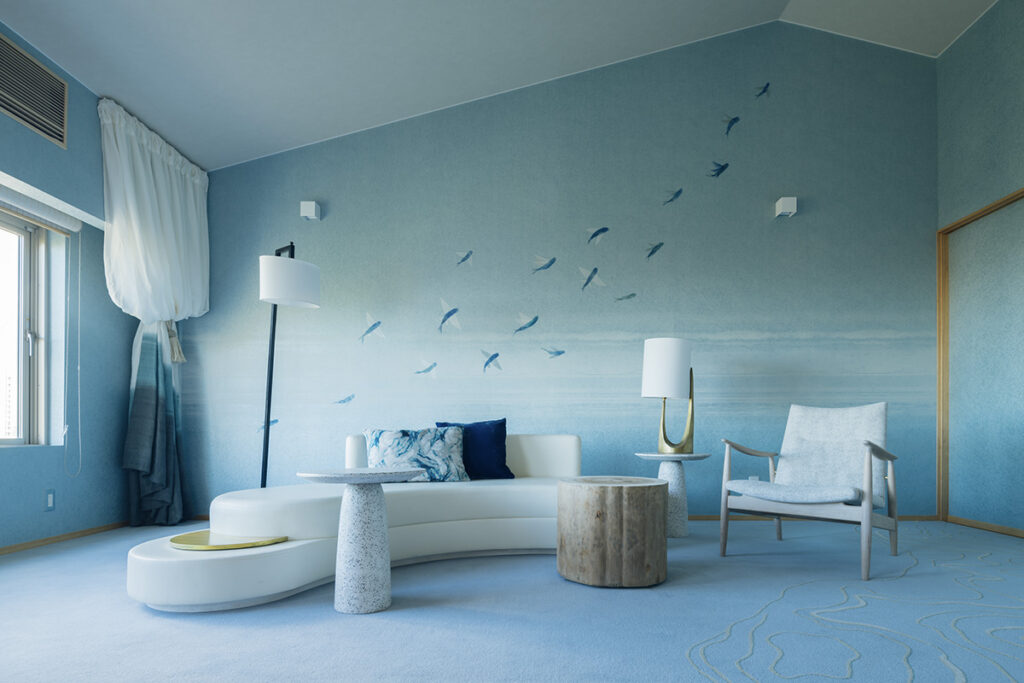
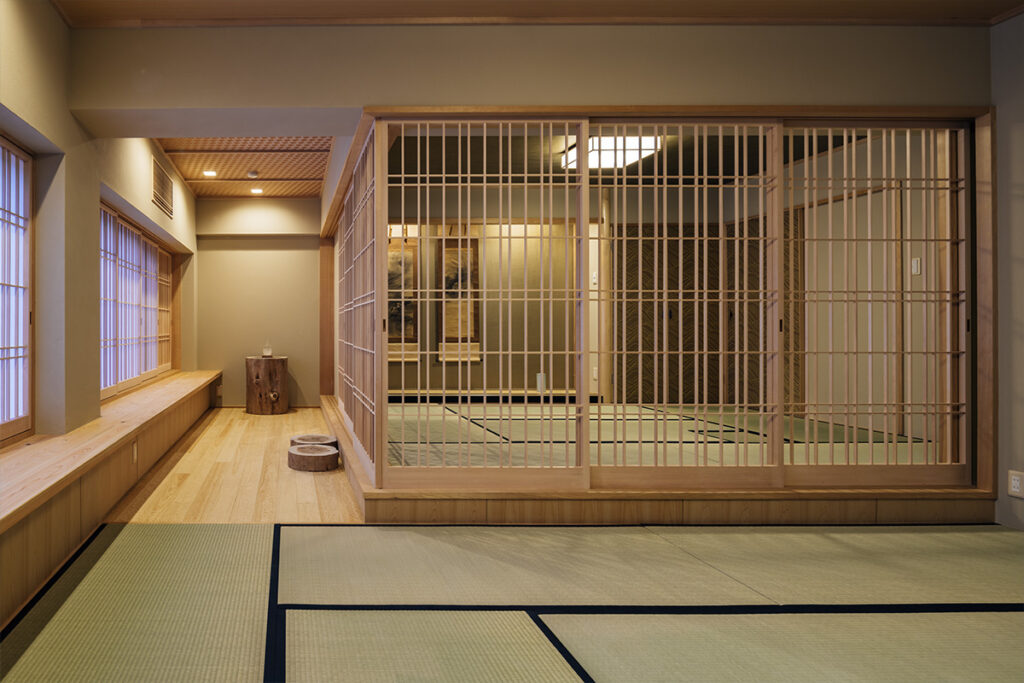
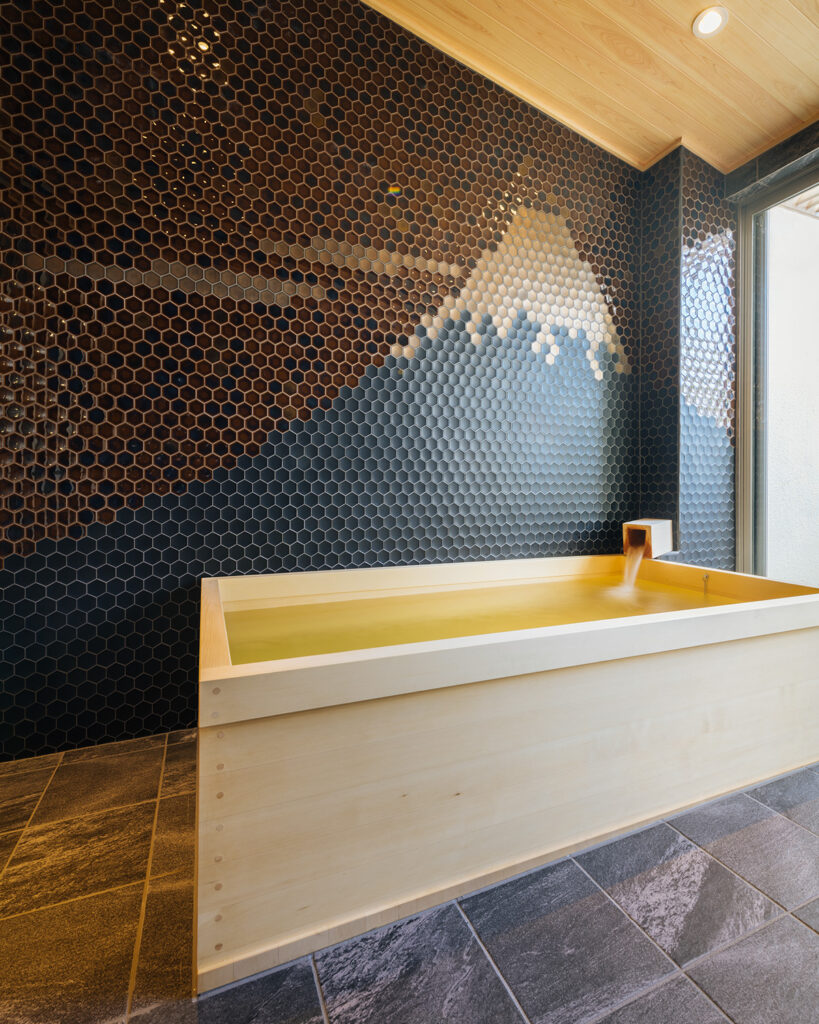
◾️Suto-suien (Atami)
This gable-roofed building, constructed in 1920 and designated as a tangible cultural asset, was designed around the theme of elegance. It showcases a stunning contrast between the wabi-sabi charm of the structure and the luxurious interiors adorned with Kanō school screens. It accommodates up to 4 guests in 2 rooms.
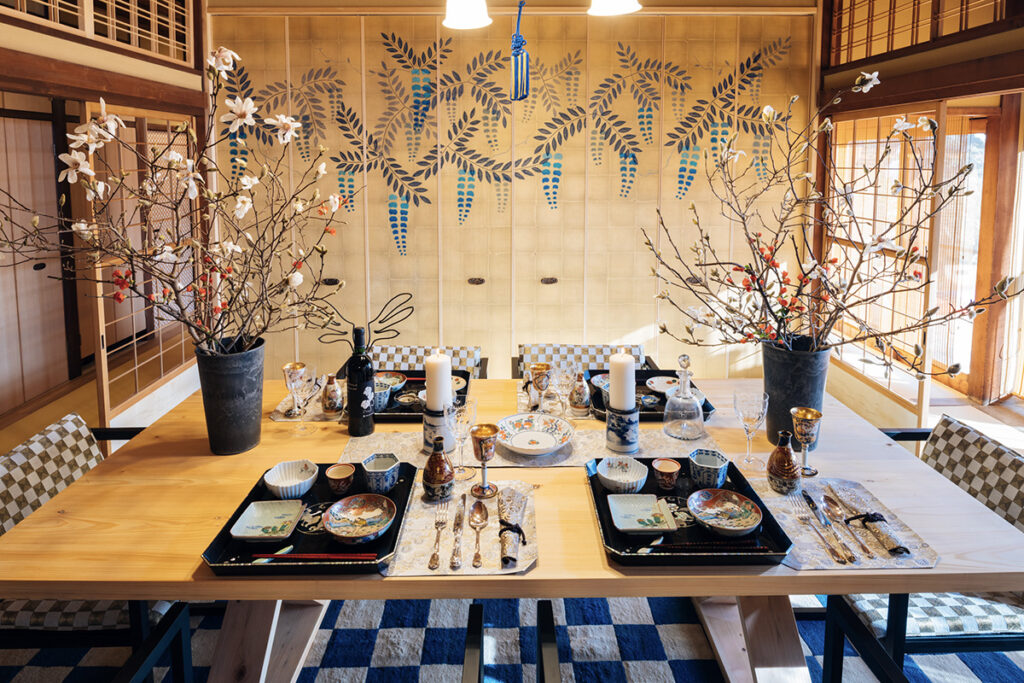
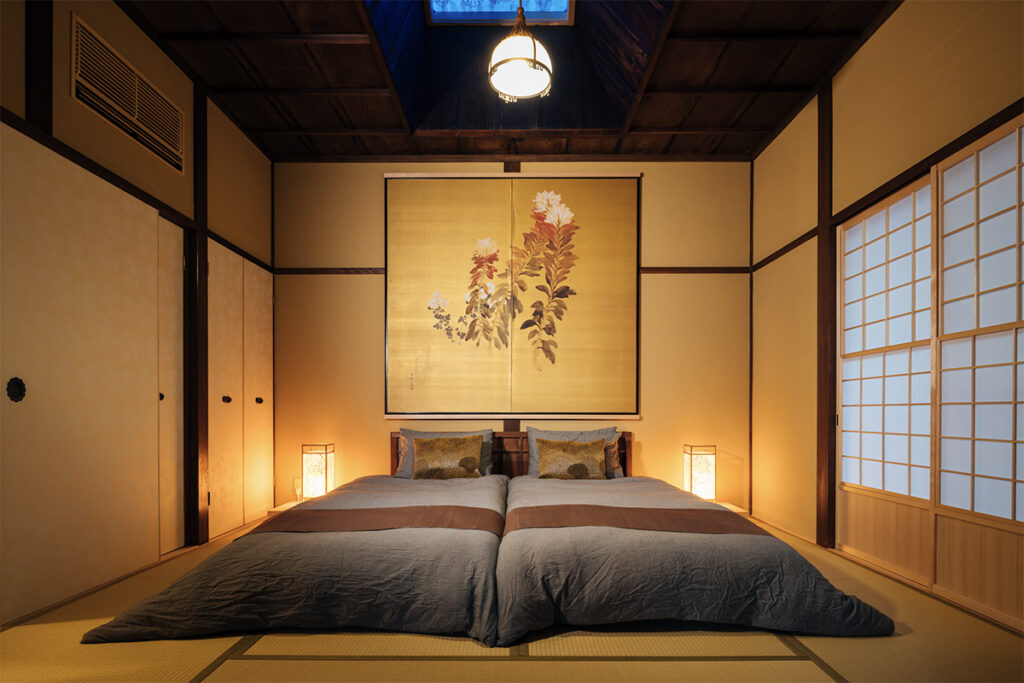
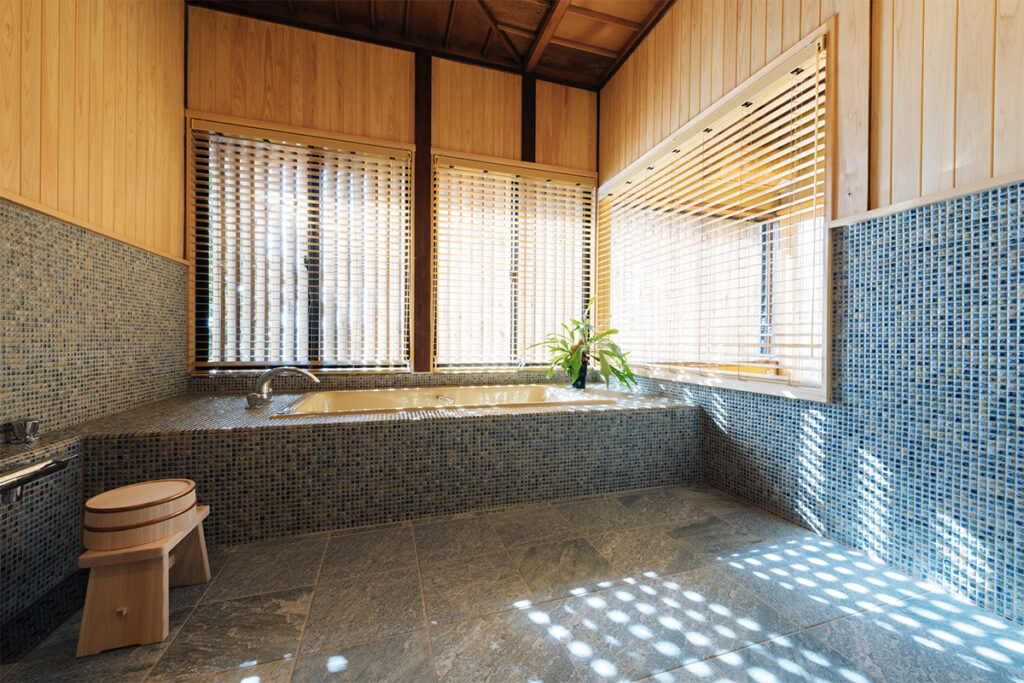
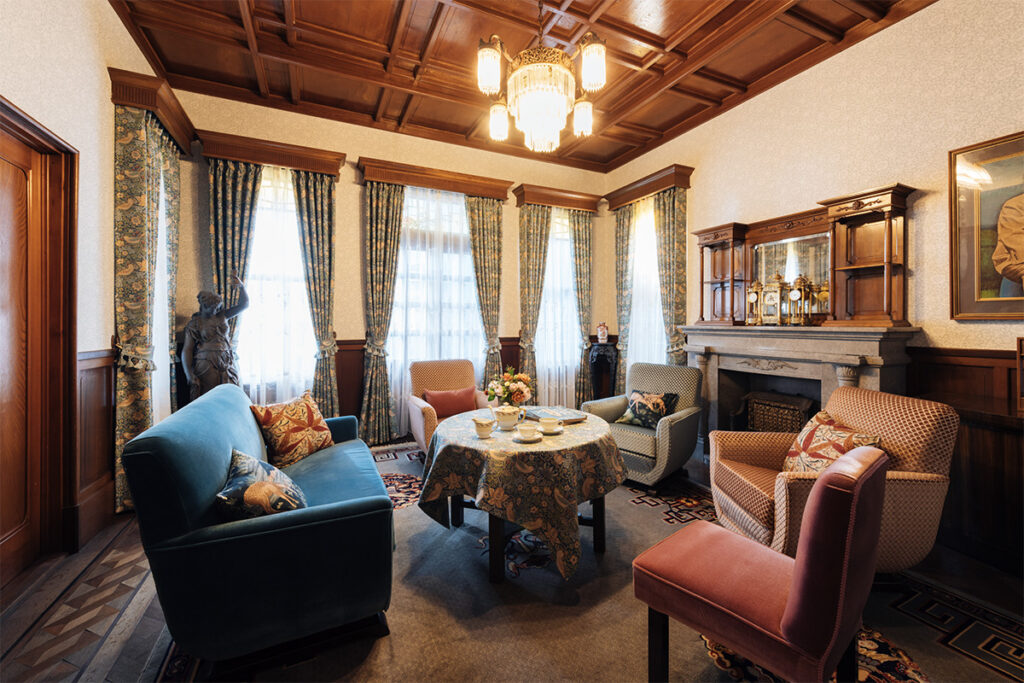
◾️Gakuroku Suien (Lake Kawaguchi)
This dynamic wooden house, over 200 years old and registered as a tangible cultural asset, features an impressive entrance gate, stately walls, and a beautiful Japanese garden. The contemporary design of this traditional farmhouse has attracted international attention, winning the prestigious ‘Design et al 2023’ award. It accommodates up to 6 guests in 3 rooms.
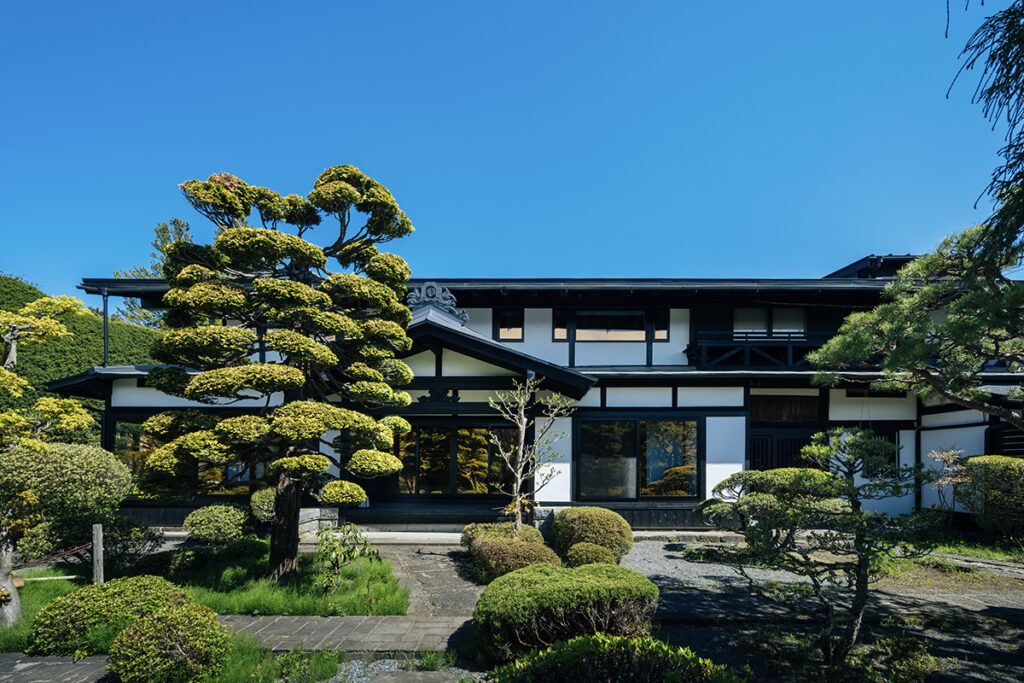
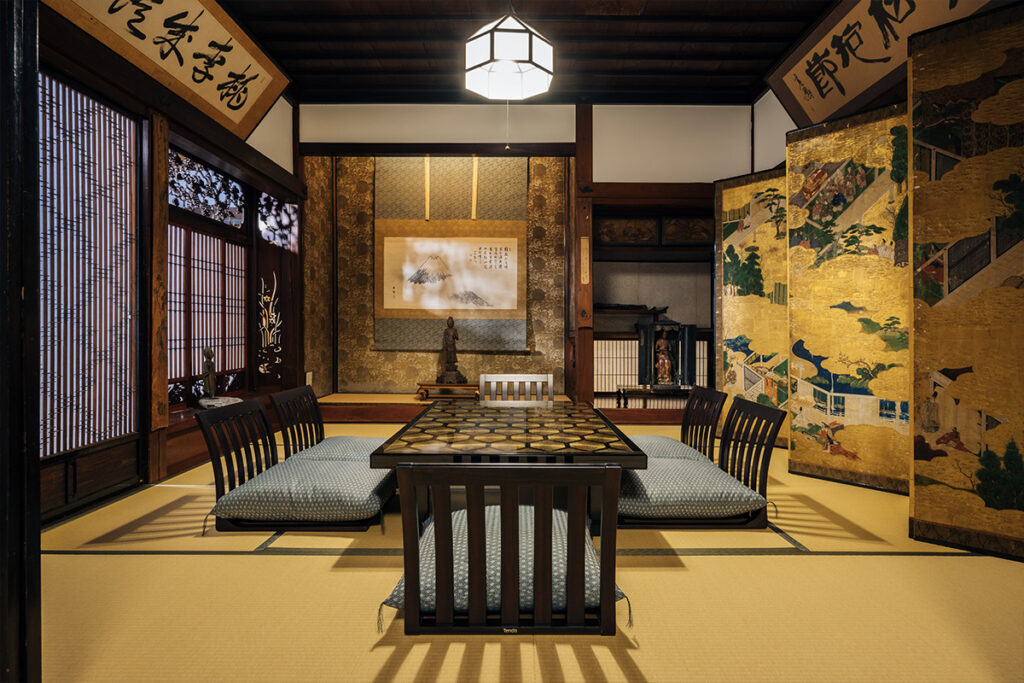
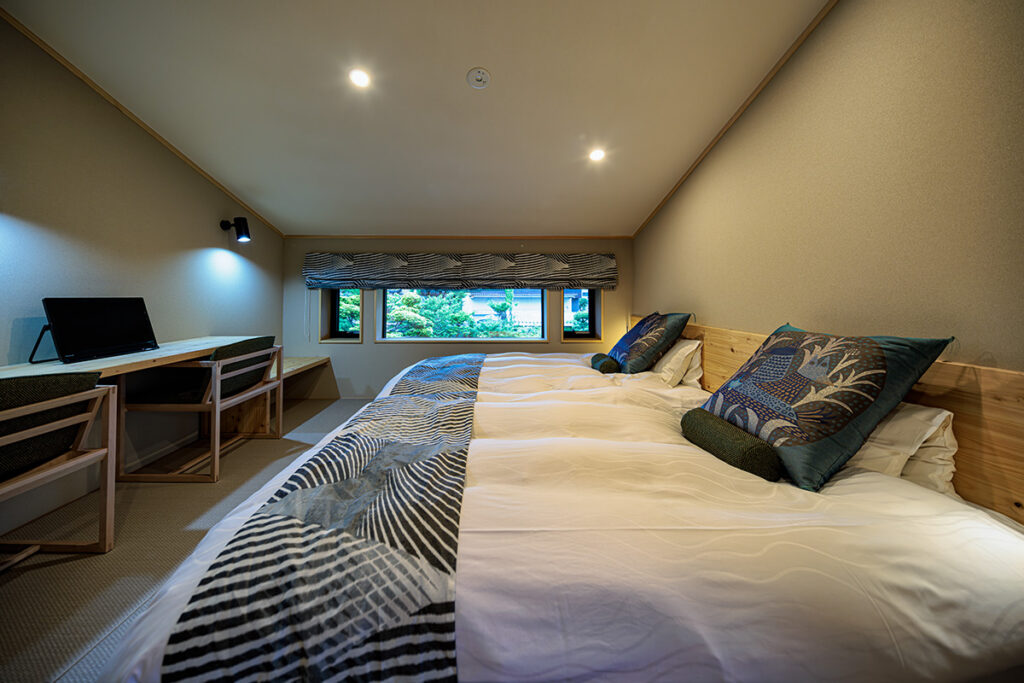
Photo credits: Curation Hotel Association, Joji Okamoto
the Curation Hotel
https://www.curationhotels.com/en/

